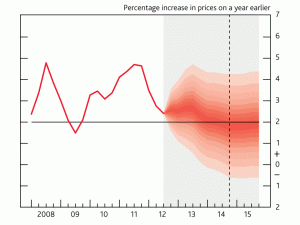There has been lot of fanfare about the appointment of Mark Carney as the next Governor of the Bank of England. Apparently he is the Lionel Messi of central bankers who will transform the state of the British economy. He won’t. Central bankers are not footballers or rock stars let alone economic saviours – they are central bankers. They work in large organisations with prescribed rules – the most that we can hope for is that they are competent. We have some idea of Dr Carney’s views after his appearance today before the House of Commons Treasury Select Committee.
The rules of the game
The imminent arrival of Dr Carney has led to much discussion that he will change the rules of the game. He can’t – these are set by the Government – and in particular, the most powerful ministry, the Treasury. Of course, he can call for review and debate and he is apparently closer to George Osborne than Mervyn King is – but that is not saying much. At the moment, the Bank has one instrument (monetary policy) and one target (inflation). George Osborne may change the target, but that is unlikely. And, thankfully, Dr Carney was dismissive of targeting nominal GDP – a compromise indicator that is an unsatisfactory fudge.
Bending the rules?
But Dr Carney apparently wants to bend the rules by adopting a policy of ‘flexible’ inflation targeting. This introduction of ‘flexibility’ suggests that the Bank may now target output as well as inflation. Although, of course, it cannot do both at the same time. But this is nothing new; the Bank has unofficially adopted flexible targeting since the financial crisis.
Look at the figure : since mid-2009, the Bank has consistently overshot its inflation target while maintain record low interest rates. Why? Because it has been targeting output. How does it justify this within its remit? Because, as the the fan diagram, shows, it always ‘forecasts’ that inflation will hit its target in two years’ time. But it hasn’t hit the target in recent history.
Monetary Policy Levers
Although the Bank only controls monetary policy, there are some different levers it can pull.
- Interest rates: these are at the lower bound so can’t go lower.
- Printing money type 1 (quantitative easing): the Bank buys government bonds from private sector companies or institutions to increase the money supply. Carney has hinted that there may be more to come.
- Printing money type 2 (‘helicopter money’): printing money and giving it to individuals and household to spend. An unworkable idea ruled out by Carney.
- Expectations: promise to keep interest rates low in the future. Carney has intimated that he wants to go down this route. So we may see very low interest rates for a very long time.
Economic Prospects
So the only substantive change may be a commitment to keep interest rates low for a long period. Not that many commentators expect interest rates to go up in the near future. The most that we can expect from the new Governor is that monetary policy is competently implemented. But that is not going to get the economy out of its current mess: the major problem is not monetary policy but the conduct of fiscal policy.


